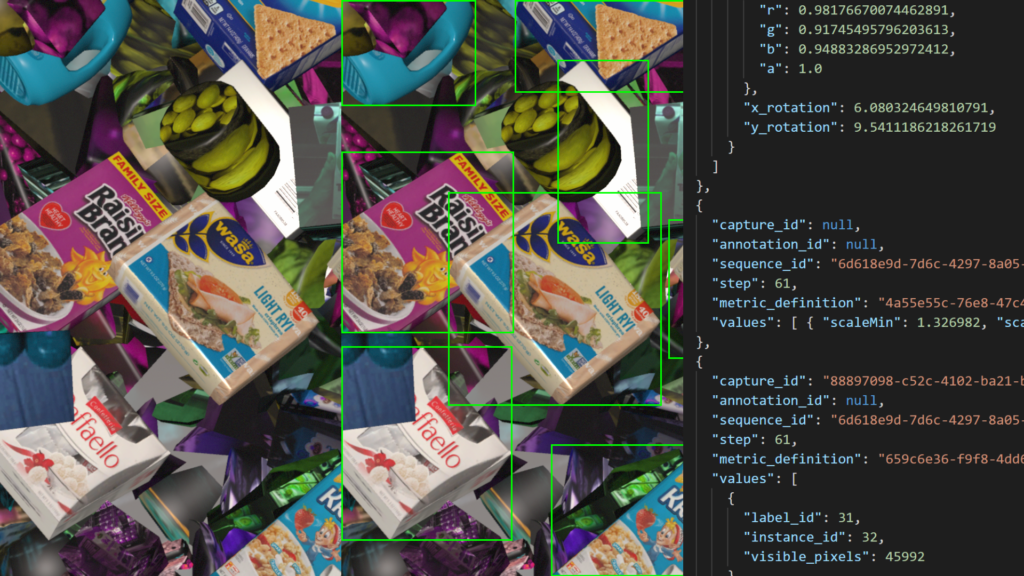The evolution of deep learning models has seen significant advancements in recent years. With the adoption of game engines such as Unity and Unreal Engine, animation teams can support data scientists by generating insightful visualisation from synthetic data.
Animation is becoming increasingly popular in a business environment. Even in a standard format, animated visuals such as augmented reality, virtual reality and gamification are making a significant impact across multiple industries. Game engines take visualisation to the next level. Moreover, the high visual quality of professional 3D rendering typically used in video games can be extended into multiple areas of industry. Data scientists and developers can benefit from the ability of game engines to convert synthetic data to enhance artificial intelligence (AI) and machine learning (ML) projects.
Training computer algorithms involves creating an entire environmental model, sensor noise modelling and rendering. Because AI algorithms need to process millions of images, the size of the dataset can expand very quickly.
Subsequently, training computers is complex and time-consuming. Synthetic data can help computer vision and machine learning engineers to train their AI models quicker. The tools are designed to be compatible with existing software with a view to enabling ML practitioners to easily convert synthetic data and solve a wide range of problems.
How To Get Started Converting Synthetic Data
Single datasets rarely provide deep insights required to develop an ML algorithm. Until recently, developers went through an exhausting research process to acquire real-life datasets, extract it and run exploratory data. More recently, programs such as Numpy, Scitkit-Learn and Python helped data scientists integrate datasets much quicker. However, there are still a number of intermediate steps between getting acquiring synthetic data and creating a dataset capable of training an ML model.
To get around this problem, developers typically write custom solutions that tackle one-off problems. Yet there are still no guarantees the quality of the yield will be efficient enough to train a computer model. Game engine tools provide a solution because they can bring any type of datasets to life in digital or video format. Thousands of images can be rendered for computers to detect objects such as faces, products, landscapes and basically anything you can take a photograph of.
ML models can then be trained on the behaviour or wide variety of backgrounds and permutations that are typically encountered in the real world. For example, you can combine analytical datasets with your live log monitoring data stored in the cloud and provide data points for a series of questions you ask in your analytics system.
Game engine tools bring these answers to life which provides critical insights high-level decision-makers can easily grasp through visual rendering. It’s far easier than trying to understand the technical explanations typically given by data scientists. There are currently several types of game engine tools used for commercial operations. Sliced Bread Animation use Unity and Unreal Engine considered the two most powerful tools on the market.
What is Unity?
Unity is a powerful real-time game engine with the ability to process computer-generated statistics and build them into aggregated synthetic datasets that are simple to understand. Metrics can be exported locally or extracted from a managed cloud service so that developers have access to a wider scope of data required for AI-generated models to build on its bank of knowledge. There are countless ways businesses can use visual data. One of the most exciting potentials is to predict potential scenarios or train a computer to avoid real-life problems. For example, gaming engines can be used to train a driverless car on how to safely navigate roads and avoid accidents. By using visual images, developers have a visual of what AI understands. This can prompt inspiration for other datasets to be added.
What is Unreal Engine?
Unreal Engine is marketed as the “world’s most open and advanced real-time 3D creation tool.” In the first quarter of 2020, a fifth-generation edition was launched with a whole host of new features that dramatically create landscapes, objects and figures. The gaming engine renders life-like visualisations and enables users to engage with interactive experiences in an immersive virtual world. The technology allows corporate users to view their business data and the market in a visual manner and change aspects in a fraction of the time it would take most CAD applications to render additional content. Game engines are by far one of the most exciting and efficient visualisation tools available right now. Although data scientists are still in the process of exploring the potentialities the technology has to offer, converting datasets into 3D visuals is already producing rewarding results.









